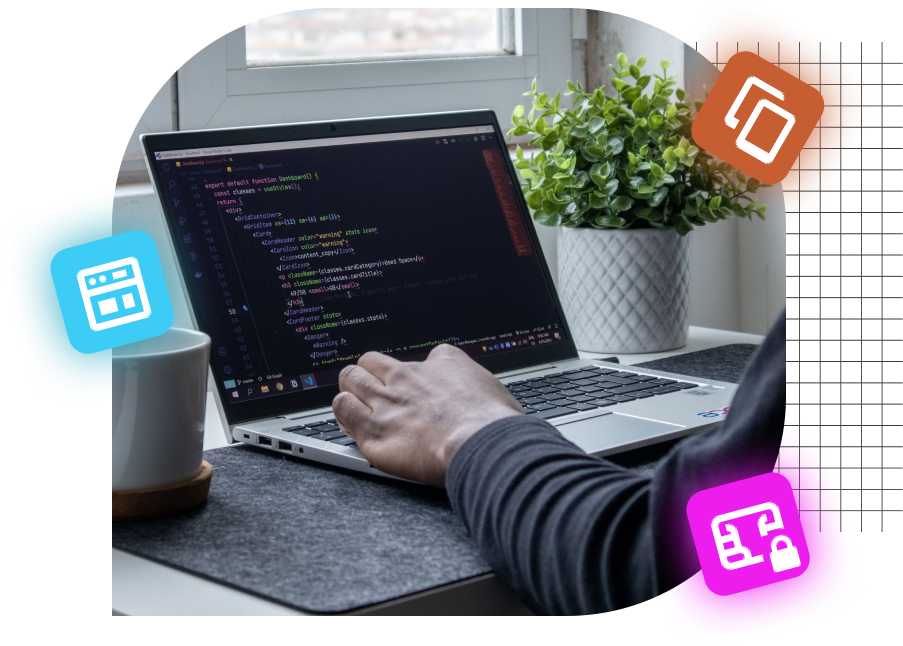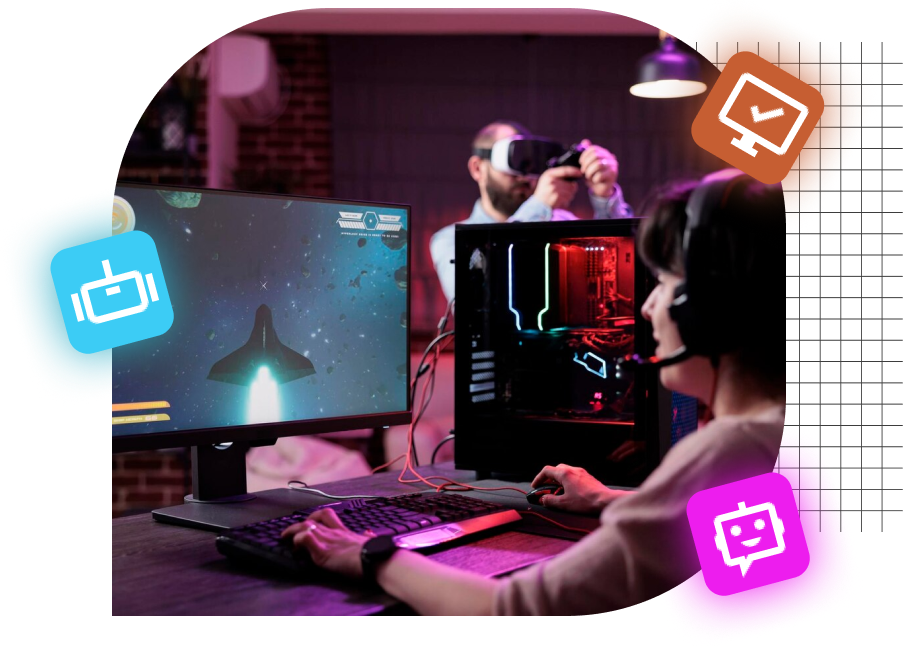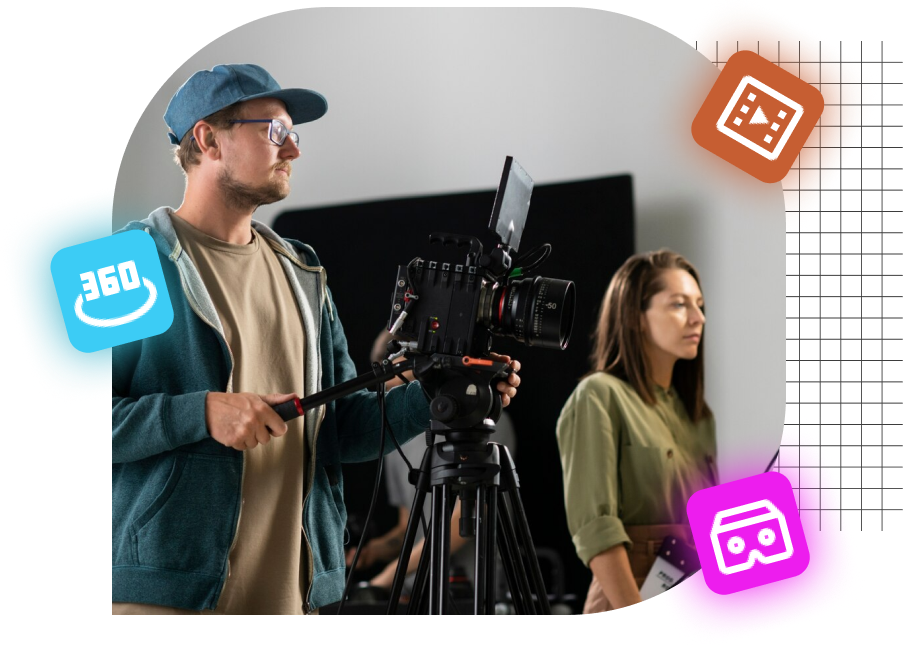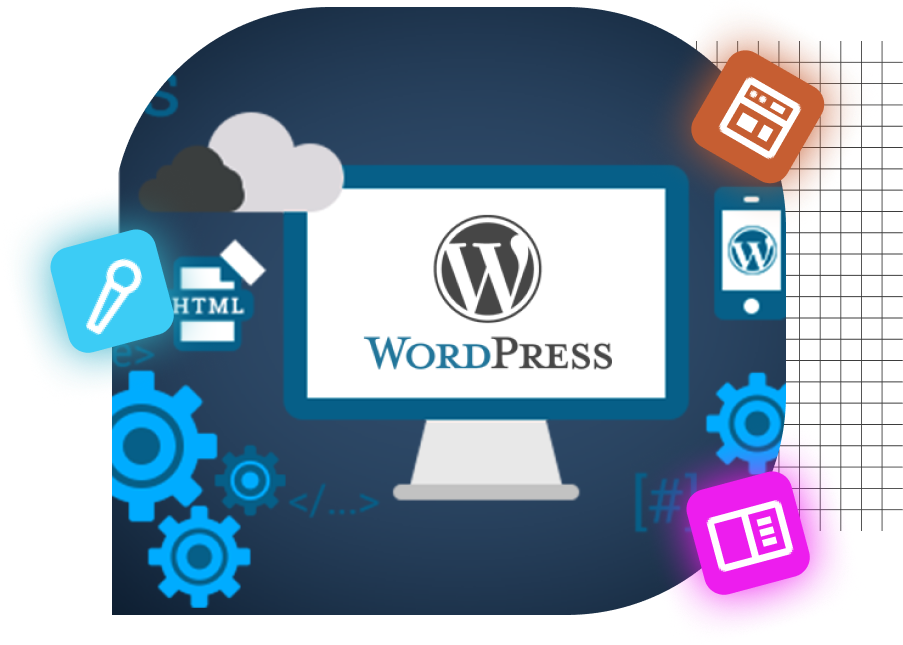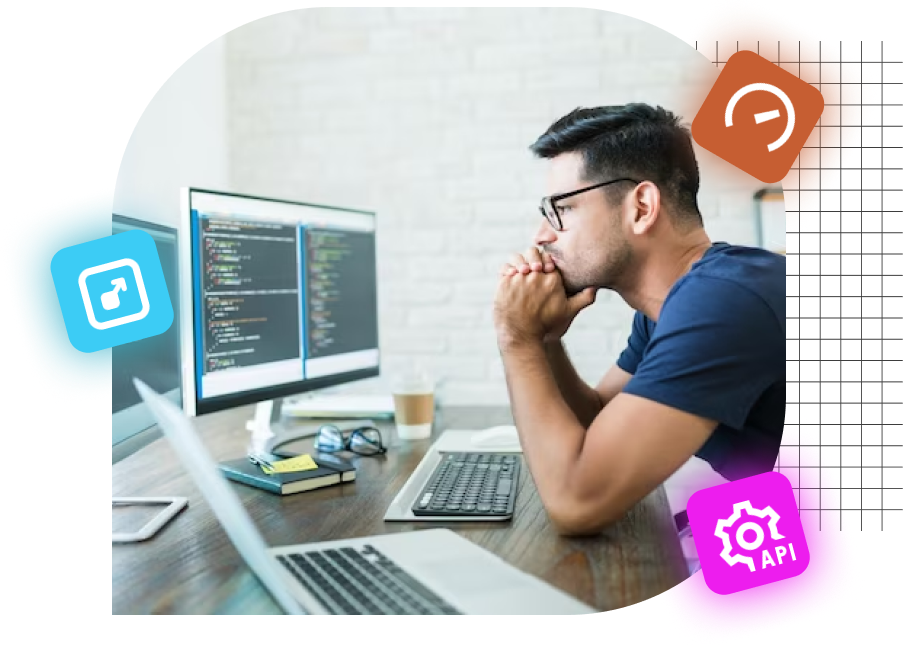In recent years, the terms “Augmented Reality (AR)” and “Virtual Reality (VR)” have transcended their initial association solely with the gaming industry. These immersive technologies have rapidly evolved to revolutionize various sectors, offering innovative solutions to long-standing challenges and transforming the way we interact with the world. In this blog post, we delve into the diverse applications of AR and VR, exploring their impact across different industries and shedding light on their potential to reshape the future.
Understanding Augmented Reality and Virtual Reality
Before delving into their applications, let’s distinguish between AR and VR:
- Augmented Reality (AR) overlays digital content onto the real world, enhancing the user’s perception of their environment. AR technology typically operates through smartphones, tablets, or specialized AR glasses, blending digital elements seamlessly with the physical world.
- VR Applications, on the other hand, immerses users in a completely simulated environment, cutting them off from the real world. VR achieves this immersion through headsets or goggles that transport users to virtual realms, offering an immersive, interactive experience.
How Do Augmented Reality and Virtual Reality Work?
Augmented Reality (AR) and VR Applications are both groundbreaking technologies that offer immersive experiences, but they operate in distinct ways.
Augmented Reality functions by leveraging a combination of cameras,
Sensors, and computer vision algorithms to understand and interpret the user’s physical environment. These devices, whether they’re smartphones, smart glasses, or specialized AR headsets, capture real-world imagery through their cameras and analyze it in real-time. Using this data, AR systems can recognize features and objects in the environment, such as surfaces, shapes, and landmarks.
Once the system has identified the user’s surroundings, it overlays digital content onto the real-world view displayed on a screen or through a headset. This digital content could range from simple graphics and text to more complex 3D models and animations. Crucially, the digital objects appear anchored to the real-world environment, maintaining their position and orientation relative to physical objects.
The key to creating a seamless AR experience lies in accurate tracking and registration. AR devices continuously track the user’s movements and adjust the position and orientation of digital objects accordingly. This tracking may involve sophisticated algorithms that combine data from multiple sensors, such as accelerometers, gyroscopes, and GPS, to ensure precise alignment between the real and virtual elements.
On the other hand,
Virtual Reality immerses users in entirely virtual environments, disconnecting them from the physical world. VR systems typically consist of a head-mounted display (HMD) or goggles, along with motion controllers or other input devices. The HMD contains high-resolution displays that cover the user’s field of view, effectively blocking out the real-world surroundings.
To create the illusion of presence and immersion, VR Applications systems track the user’s head movements in real-time. This tracking is achieved through a variety of methods, including gyroscopes, accelerometers, and external tracking systems like infrared sensors or cameras. As the user moves their head, the VR system updates the display to reflect their new perspective, creating a seamless and responsive virtual environment.
In addition to head tracking, VR systems often incorporate hand tracking or motion controllers to enable interaction with virtual objects and environments. These input devices allow users to manipulate objects, navigate virtual spaces, and engage in immersive experiences.
Overall, while AR overlays digital content onto the real world, VR transports users to entirely virtual environments, each offering unique opportunities for exploration, creativity, and interaction. Both technologies continue to evolve rapidly, driven by advancements in hardware, software, and user experience design.
Augmented Reality and Virtual Reality Examples
The versatility of AR and VR technologies extends far beyond entertainment. Here are some compelling examples:
- Education: AR and VR offer immersive learning experiences, allowing students to explore historical sites, dissect virtual organisms, or even travel to outer space from the comfort of their classrooms.
- Healthcare: From surgical simulations for training medical professionals to therapeutic VR applications for pain management and mental health treatment, AR and VR are transforming healthcare delivery and training.
- Retail: AR enables virtual try-on experiences, allowing customers to visualize how clothing or accessories will look on them before making a purchase. VR, meanwhile, facilitates virtual showroom experiences, enabling retailers to showcase their products in immersive virtual environments.
- Architecture and Real Estate: AR and VR Applications empower architects and real estate developers to visualize designs at scale, allowing clients to explore virtual representations of buildings before construction begins.
- Manufacturing and Maintenance: AR-based instructions and remote assistance tools streamline manufacturing processes and enhance maintenance operations by overlaying digital information onto machinery and equipment.
Virtual Reality vs. Augmented Reality: Bridging the Gap with Mixed Reality
Virtual Reality (VR) and Augmented Reality (AR),
Represent two ends of the immersive technology spectrum, each offering unique experiences and applications. However, the emergence of Mixed Reality (MR) presents an exciting opportunity to bridge the gap between these two technologies, creating a seamless integration of virtual and physical environments.
At its core, Mixed Reality aims to blur the line between the digital and real worlds, enabling users to interact with virtual objects in their physical surroundings. Unlike VR, which transports users to entirely virtual environments, or AR, which overlays digital content onto the real world, MR combines elements of both to create an immersive and interactive experience.
One of the defining features of MR is its ability to spatially map and understand the user’s environment in real-time. Through advanced sensors and cameras, MR devices can detect and respond to physical objects and surfaces, allowing virtual content to interact with the real world. This interaction opens up a wide range of possibilities across various industries.
In the realm of design,
MR enables architects and engineers to visualize and manipulate virtual models within real-world environments. For example, an architect can place a digital blueprint of a building onto an actual construction site, allowing them to assess how it fits into the surrounding landscape and make real-time adjustments.
In gaming, MR introduces a new level of immersion by integrating virtual characters and objects into the player’s physical space. Players can interact with virtual creatures as if they were actually present in the room, creating a more engaging and realistic gaming experience.
MR also holds significant potential in training and simulation applications. By overlaying instructional content onto physical objects or environments, MR can provide hands-on training experiences in fields such as medicine, manufacturing, and military training. For instance, medical students can practice surgical procedures on virtual patients overlaid onto physical mannequins, allowing for realistic and risk-free training scenarios.
Furthermore, MR has the potential to revolutionize communication and collaboration by enabling remote users to interact in shared virtual spaces. Teams spread across the globe can collaborate on projects as if they were in the same room, fostering creativity and productivity.
Overall, Mixed Reality represents a convergence of virtual and physical worlds, offering limitless possibilities for innovation and exploration across various industries. As technology continues to advance, MR is poised to become an integral part of our daily lives, transforming the way we work, play, and interact with the world around us.
The Future of Augmented and Virtual Reality
Augmented Reality (AR) and Virtual Reality (VR)
The future of Augmented Reality (AR) and Virtual Reality (VR) holds immense promise as these technologies continue to evolve and permeate various aspects of our lives. As hardware becomes more sophisticated, software more intelligent, and user experiences more immersive, the applications of AR and VR are set to expand exponentially.
One area where AR and VR are expected to make a significant impact is in the realm of remote work and collaboration. As businesses increasingly embrace remote and distributed teams, AR and VR technologies can provide innovative solutions for communication, collaboration, and productivity. Imagine a future where colleagues from around the world can meet in virtual boardrooms, manipulate 3D models together, and brainstorm ideas as if they were in the same physical space. These immersive collaboration tools can enhance creativity, foster teamwork, and bridge the gap between remote workers.
In the realm of entertainment,
AR and VR are set to revolutionize how we consume media and interact with content. VR gaming, for example, is already pushing the boundaries of immersion and realism, offering players the opportunity to step into fully realized virtual worlds and engage in experiences that were once unimaginable. Similarly, AR technologies are transforming how we experience live events, allowing spectators to overlay digital enhancements onto their physical surroundings, whether they’re attending a concert, sports game, or theater performance.
Beyond entertainment, AR and VR have the potential to redefine customer engagement and retail experiences. AR applications, for instance, can enable shoppers to visualize products in their own homes before making a purchase, leading to more informed buying decisions and reducing returns. VR, on the other hand, can transport customers to virtual showrooms or storefronts, providing an immersive and personalized shopping experience from the comfort of their homes.
In the healthcare sector,
AR and VR are driving innovation in areas such as medical training, patient care, and treatment planning. Medical students can use AR simulations to practice complex surgical procedures in a risk-free environment, while surgeons can utilize VR to plan and rehearse surgeries with greater precision and accuracy. Additionally, AR technologies are being used to enhance patient care by providing real-time access to medical information and assisting healthcare professionals during procedures.
Furthermore, AR and VR have the potential to revolutionize education and training across various industries. Immersive learning experiences can cater to different learning styles, enhance retention rates, and provide hands-on training in environments that may otherwise be inaccessible or costly to replicate. From virtual field trips to interactive simulations, AR and VR can make learning more engaging, interactive, and accessible to learners of all ages.
As technology continues to advance, the possibilities for AR and VR are limited only by our imagination. From transforming how we work and play to redefining how we learn and interact with the world around us, immersive technologies are poised to shape the future in profound and meaningful ways. With continued innovation and investment, AR and VR have the potential to become ubiquitous tools that enrich our lives and empower us to explore new realities.
Conclusion
In conclusion, the transformative potential of Virtual Reality (VR) extends far beyond the realm of gaming, as evidenced by its increasing adoption across various industries. From healthcare and education to manufacturing and retail, VR applications are revolutionizing the way businesses operate, innovate, and engage with their stakeholders.
In healthcare,
VR is facilitating medical training, surgical planning, and patient care, offering immersive simulations and experiences that enhance learning outcomes and improve treatment outcomes. Similarly, in education, VR is providing students with immersive learning environments, interactive simulations, and virtual field trips, enriching educational experiences and catering to diverse learning styles.
In manufacturing and design, VR is streamlining product development, prototyping, and collaboration processes, enabling teams to visualize and manipulate 3D models in immersive virtual environments. This not only accelerates the design iteration cycle but also reduces costs and improves product quality.
In retail and customer engagement,
VR is transforming the way consumers shop, interact with products, and experience brands, with virtual showrooms, interactive product demos, and personalized shopping experiences driving customer engagement and loyalty.
Moreover, VR is revolutionizing remote work and collaboration by providing virtual meeting spaces, immersive collaboration tools, and virtual coworking environments that bridge geographical distances and enhance teamwork and productivity.
As VR technology continues to evolve and become more accessible,
The potential for innovation and disruption across industries will only continue to grow. With its ability to create immersive, realistic, and interactive experiences, VR is poised to reshape the future of work, education, healthcare, and entertainment, unlocking new possibilities and driving positive change across society. As businesses and organizations embrace the transformative power of VR, they will be better positioned to stay competitive, adapt to changing market dynamics, and deliver value to their stakeholders in the digital age.

